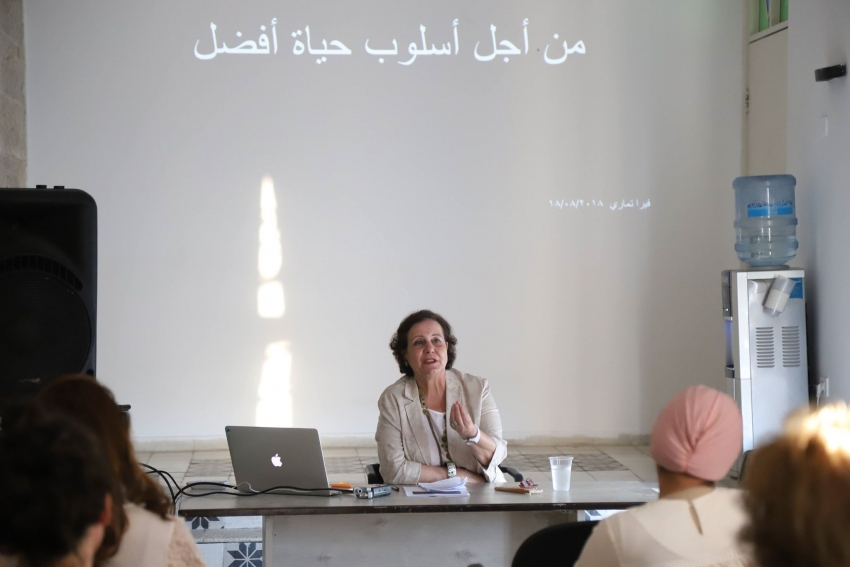
The Public Programme (PP) of the A. M. Qattan Foundation concluded Ways of Seeing, a series of workshops on Visual Culture. These workshops were inspired by Ways of Seeing, a book and film by British artist and writer John Berger. The film was aired on BBC in the 1970s.
Moderated by Jerusalemite artist Vera Tamari, the last workshop revolved around advertising. “Advertising overpowers and makes people see life as rosy and beautiful. We might sometimes see a very beautiful image in a magazine. However, when we turn the page, we see the world’s tragedies. Forty six years ago, Berger talked about these contradictions, which we see in advertising. This does not mean that these ideas are obsolete and outdated. On the contrary, they urge people to think and adapt to the new reality from an art perspective.” Tamari explained.
Tamari said Berger was “a thinker, art critic and artist. It is helpful that we examine his way of thinking.” Tamari asserted that the importance of this series of workshops lied in seeing how Berger thought of the visual concept, interpreted and linked paintings to relationships with society and individuals. To this avail, Berger used, spoke about and analysed landmarks of world art.
At the end of the workshops, Yazid Anani, PP Director, stated: “What’s interesting about the Visual Culture workshops is that we did not expect such public interest. This is not the common audience we normally encounter in art and cultural events. It involves people, every one of whom has a particular problem with the visual materials they see in the space they live in. That space can be at one’s home, on TV or mobile telephone, or in the urban space or urban environment, which is replete with advertisements and visual materials that influence us.”
Anani indicated that many participants requested that these important workshops continue to be held. For them, “the image has come to play a greater role than the written text in our day-to-day relationships.”
“Importantly, we need to understand what it means to produce, share, copy and circulate images. We also need to figure out the link between the copy and the reality. In contemporary life, both the image and its meaning have a history that has brought us to the image production technology. Hence, we should understand the link between image production, photography, visual arts, image representation in the press, and reality representation through images in the news. Why is this particular image selected? Why do we see this bright spot, but another dark spot? How is the angle of the image selected? More importantly, what has been excluded from the image? How has the image come to represent a culture and society and play a role in shaping an idea of the person, region, family or society? This is serious. In light of the tremendous flow of visual materials, people now build their imagination and expectations through images.”
The previous three workshops were moderated by Yazid Anai, Adania Shibli and Rana Barakat.
